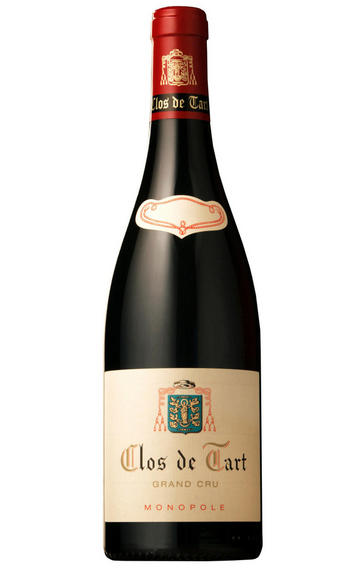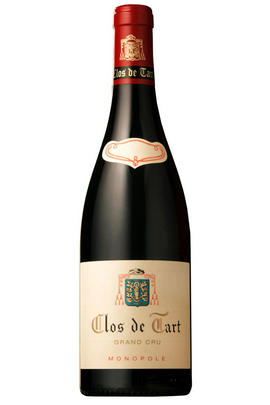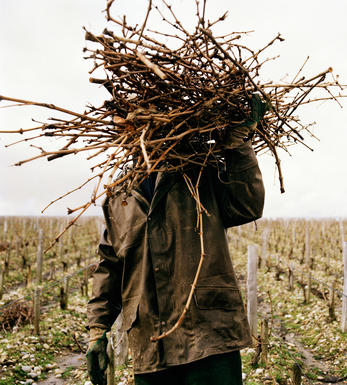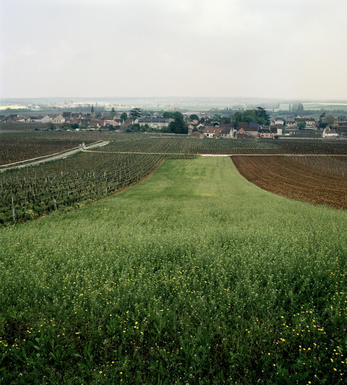
2006 Clos de Tart, Grand Cru, Clos de Tart, Burgundy

Critics reviews
Burghound, Jan 2009
David Schildknecht - 22/12/2009
About this WINE

Domaine Clos de Tart
Located in Morey-St Denis, Clos de Tart is the largest of Burgundy’s five Grand Cru monopole vineyards. The vineyard dates to at least 1141 and has had just four owners in that time. Today, it is part of François Pinault’s Artémis Domaines, alongside Ch. Latour, Domaine d’Eugénie and more.
The largest of Burgundy’s five Grand Cru monopole vineyards, Clos de Tart occupies some of the greatest terroir in Morey-St Denis. The vineyard dates to at least 1141, when it was purchased by the Cistercian nuns of Notre Dame de Tart. There have been just four owners in that time, and today it is part of François Pinault’s Artémis Domaines, alongside Ch. Latour, Domaine d’Eugénie, Eisele Vineyard and more.
The 7.52-hectare clos is situated at the south end of Morey-St Denis, bordering Bonnes Mares to the south and Clos des Lambrays in the north. The vineyard has been divided into 13 plots.
The cellars have seen considerable renovation in recent years, with a new vat room inaugurated in time for the 2019 vintage. Director and winemaker Alessandro Noli now works with 15 wooden vats of varying sizes (20 hectolitres to 40 hectolitres) to enable plot-by-plot vinification
Clos de Tart has since 2015 been farmed organically, with organic certification as of the ’18 vintage. Biodynamic practices were adopted in ’16, with certification from the ’19 vintage. The estate maintains a vine nursery in Morey-St Denis.

Morey-Saint-Denis
Morey is sometimes ignored between its two famous neighbours, Chambolle-Musigny and Gevrey-Chambertin, but its wines are of equal class, combining elegance and structure. Morey-St Denis, being that little bit less famous, can often provide excellent value.
The four main Grand Cru vineyards continue in a line from those of Gevrey-Chambertin, with Clos St Denis and Clos de la Roche the most widely available. Clos des Lambrays (almost) and Clos de Tart (entirely) are monopolies of the domains which bear the same names.
Domaine Dujac and Domaine Ponsot also make rare white wines in Morey-St Denis.
- 64 hectares of village Morey-St Denis
- 33 hectares of Premier Cru vineyards (20 in all). Best vineyards include Les Charmes, Les Millandes, Clos de la Bussière, Les Monts Luisants
- 40 hectares of Grand Cru vineyard. Clos de Tart, Clos des Lambrays, Clos de la Roche, Clos St Denis and a tiny part of Bonnes Mares
- Recommended Producers: Dujac, Ponsot, Clos de Tart, Domaine des Lambrays

Pinot Noir
Pinot Noir is probably the most frustrating, and at times infuriating, wine grape in the world. However when it is successful, it can produce some of the most sublime wines known to man. This thin-skinned grape which grows in small, tight bunches performs well on well-drained, deepish limestone based subsoils as are found on Burgundy's Côte d'Or.
Pinot Noir is more susceptible than other varieties to over cropping - concentration and varietal character disappear rapidly if yields are excessive and yields as little as 25hl/ha are the norm for some climats of the Côte d`Or.
Because of the thinness of the skins, Pinot Noir wines are lighter in colour, body and tannins. However the best wines have grip, complexity and an intensity of fruit seldom found in wine from other grapes. Young Pinot Noir can smell almost sweet, redolent with freshly crushed raspberries, cherries and redcurrants. When mature, the best wines develop a sensuous, silky mouth feel with the fruit flavours deepening and gamey "sous-bois" nuances emerging.
The best examples are still found in Burgundy, although Pinot Noir`s key role in Champagne should not be forgotten. It is grown throughout the world with notable success in the Carneros and Russian River Valley districts of California, and the Martinborough and Central Otago regions of New Zealand.


Buying options
Add to wishlist
Description
With an extraordinary intensity of fruit, including a succulent dollop of blackberry, this wine has a very impressive, deep red-black colour. The harmonious bouquet reveals well-integrated oak whilst the ever-present tannins are dominated by succulent fruit. Marvellously intense, this is a dynamic and vibrant wine.
wine at a glance
Delivery and quality guarantee